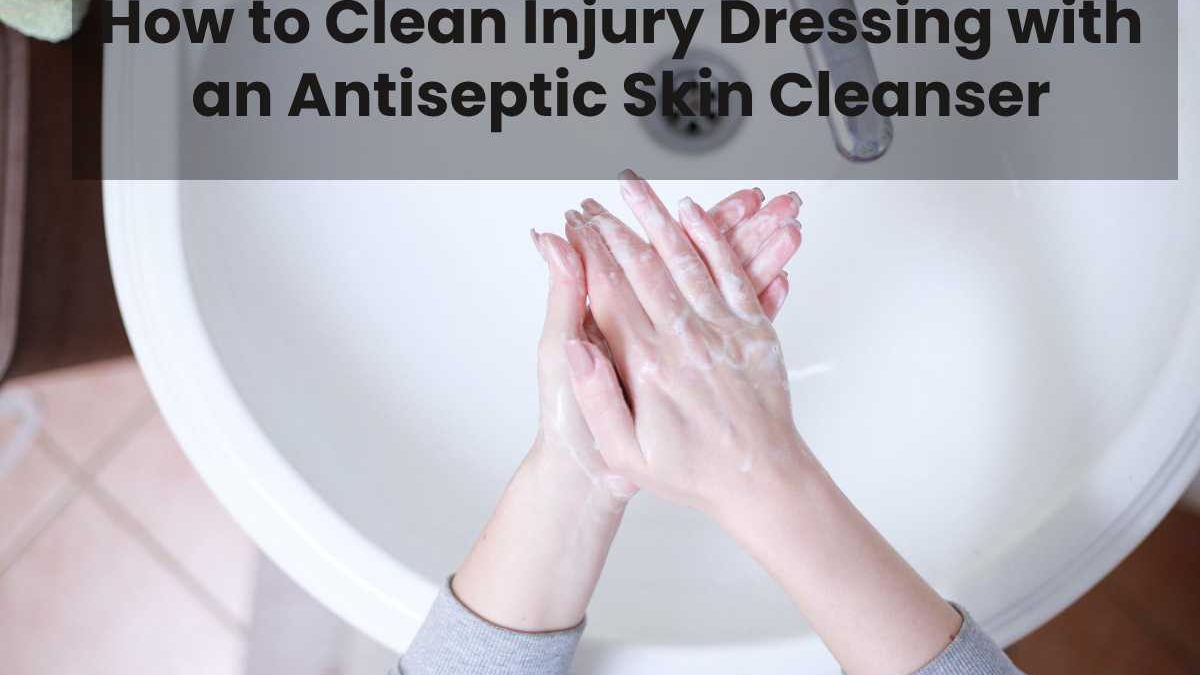Antiseptic Skin Cleanser – We all have had some cuts or scrapes at a playground, home, office, or during the change of seasons. These skin bruises should not be ignored as minor health issues and can turn fatal if not treated with the correct care.
Our skin is susceptible and breaks down when a cut, scrape, or bruise causes a dangerous risk of germs entering our body. The most acceptable way to keep away from the dangers of harmful germs is to treat the wound with an antiseptic skin cleanser.
Table of Contents
What is an Antiseptic Skin Cleanser?
Frequently used in hospitals and kept in the first aid boxes, an antiseptic, often referred to as skin disinfectant, is a wound cleaning solution that stops or slows down the growth of microorganisms to reduce the risk of infections further causing any damage. Antiseptics are used in medical settings and are available OTC (over the counter) for home use. These include hand rubs and hand washes.
Ever wondered what these cuts and wounds treatment antiseptic cleansers contain?
Cuts and wounds treatment antiseptic skin cleansers contain different solutions, depending upon the purpose for which they use.
Most commonly available antiseptic cleansers are alcohol-based hand rubs (ABH) and are used as standard hand antisepsis to curtail the growth of microbes that may cause infection.
Another common ingredient of a wound cleaning medicine is the povidone-iodine (PVI) scrub solution.
And Also,7.5% or 4% PVI scrub solution remains used as an antiseptic cleanser for contaminated wounds, healthy skin as an antiseptic hand wash, and surgical hand washes.
How should I apply an Antiseptic cleanser solution?
Are you applying first aid for the wounds? If you use an alcohol-based antiseptic skin cleanser directly on an open wound, chances are your wound may not get healed, or there will be a considerable delay in healing. An antiseptic cleaning solution should be applied with utmost care as some injury cleaning liquids must be diluted before use due to their varying alcohol content which may cause harm on direct application.
Medical practitioners suggest that if you use an antiseptic cleanser, use it only once as a wound cleaning liquid and never chronically. When you tend the wound again, it is best to use water. Medical practitioners advise against rubbing alcohol or peroxide to clean an open wound as it may do more harm than good.
When to Seek Medical Advice?
It will help if you question whether you should take self-medication to heal minor cuts and injuries. Medical advisors say No. In cases when the amount is profound, and the bruises are dark, you must seek the advice of a medical expert as soon as possible.
To book an appointment with the best General Practitioner around you, download the Gigadocs app. Through Gigadocs, you can manage your complete healthcare in one app. You can book a doctor’s appointment, save your prescriptions in a digital format, and keep a tab on your vitals. Sharing them live with your medical practitioners.
What are Some things I Must know or do While Taking Antiseptic Skin Cleanser?
Tell all of your health care provider that takes Antiseptic Skin Cleanser (chlorhexidine gluconate (topical)). It includes your doctors, nurses, pharmacists, and dentists.
Protect Clothing and Fabrics from Staining.
Some products use to clean wounds. Be sure to use Antiseptic Skin Cleanser (chlorhexidine gluconate (topical)). Some products must not remain put on open skin wounds.
Some of these drugs might catch on fire. Do not use close to an open flame or while smoking.
These tablets may cause harm if swallowed. If an Antiseptic Skin filter is swallowe, call a doctor or poison control center instantly.
Use with care in children younger than two months old. Talk with the doctor.
Conclusion:
Use on your skin only. Remain out of your mouth, nose, ears, and eyes (may burn). If you have a burst eardrum and Antiseptic Skin Cleanser (chlorhexidine gluconate (topical)) obtained in the ear. It could cause hearing loss. This medicine may cause nasty and long-lasting eye problems if put in the eye.

